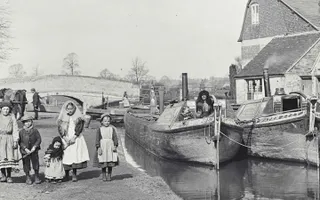Canal historian Mike Clarke talks about the 'beginning of the end' for our cargo-carrying canals.
When the first canals were built, people were unsure about the future return on their investment. The result was that just over one quarter of the UK's waterways were built as narrow canals, with locks just seven feet wide, in the belief that it would make them less expensive.
Narrow canals
These narrow canals were certainly marginally cheaper, but their small size made them less able to cope with the increasing traffic that developed, particularly in the second half of the nineteenth century. During this period, most new trade was carried by railways, and a few canal companies built railways along their waterways to offer an improved service.
However, for most canal companies their income was insufficient to pay even for improvement of their waterway, and the less successful were taken over by railway companies. Not all which were taken over were closed, and some, like the Shropshire Union Canal, were even improved as they ran through an area served by a competing railway company.
Canals and the First World War
Despite the railways, successful canals held on to their traffic during the 19th century, and some increased their tonnage of goods carried. It was the First World War which really marked the beginning of the end for carriage of goods by canal.
There was increased unionisation, with demands for working hours unsuited to canal transport, while surplus army lorries created a road transport industry. With little Government support, these problems – coupled with the move away from traditional industries and falling demand for coal – led to a rapid decline in canal transport.
Speedy deliveries
A few larger waterways such as the Aire & Calder did survive, but most slowly faded away. The winter of 1963/4, and the change from coal gas to North Sea gas in the following decade, marked the end for a canal transport industry incapable of coping with the demands of customers increasingly reliant on speedy deliveries by the new motorways.
After nationalisation, it was difficult for government to close the canals, though their condition did decline. However, amateurs began promoting the greater use of canals for leisure, and they were able to change government attitudes.






